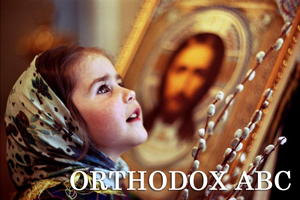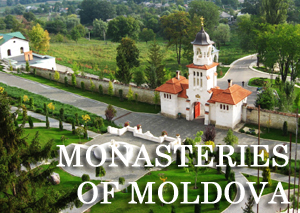
This decision was made by the Holy Synod of the Ukrainian Orthodox Church (Journal No. 49).
The commemoration day of St. Stephan is set on 2/15 July (new style/old style). Saint Stephan III the Great, Prince of medieval Moldova, was glorified by the Romanian Orthodox Church in 1992.
Currently, Orthodox Christians from certain regions of the Ukrainian Orthodox Church largely venerate Saint Stephan, building and sanctifying churches in his name.
Source: Pravmir.ru
The holy and right-believing Prince Saint Stephen the Great (Romanian: Dreptcredinciosul Voievod Ştefan cel Mare şi Sfânt) was ruler of Moldova (in modern-day Romania) from 1457 to 1504. He was a great statesman and military tactician as well as being a devout Orthodox Christian. He was responsible for defending Moldova against the Ottoman invasion, building a church or monastery in thanks to God after each victory.
Stephen the Great was glorified, along with his spiritual father St. Daniel the Hermit of Voroneţ (Sf. Daniil Sihastru de la Voroneţ) and many other Romanian saints, by the Synod of the Church of Romania in 1992. His feast day is July 2.
Life
St. Stephen (also spelled Stefan) is honored as a saint throughout the Orthodox Church. Despite his earthly failings (somewhat comparable to the Psalmist and Patriarch David), he was a great defender of the True Faith against the onslaught of the Ottoman-Muslim Empire during the last half of the fifteenth century.
St. Stephen defeated Mehmet at a famous and decisive battle in a place called Vaslui (not far south of Iaṣi in the province of Moldova). Had he not done so, little would have stood between Mehmet and the Ukraine—and the obliteration of the rest of the Orthodox world. Mehmet met his match after shortly after having sacked Constantinople. With the rest of the Balkan peninsula falling to Islam’s sword, Mehmet must have seemed unstoppable to Christians everywhere, yet none of the Western powers nor the Western Church would lift a finger against the Ottomans. Thus, Stephen stood more or less alone in defense of Christianity and his homeland.
Perhaps of equal or greater significance to this great saint’s life is that he built many churches and monasteries—one after each of his 47 successful battles against the Ottomans, including many of the most beautiful monuments to Orthodoxy in the entire world. These monasteries still stand today and despite over 500 tumultuous years, including 50 years of Communist persecution of the Faith, they continue to thrive as a home to thousands of monastics. Stephen’s monasteries include the famous“painted” monasteries, referring to the fact that the outsides are frescoed and, remarkably, have survived 500 years of weather—except on the north sides. These include the fabulous painted monasteries of Voroneţ, Moldoviţa, and Suceaviţa, as well as Putna (where Stephen reposes) and Neamţ. At the west end of the south exterior wall of Voroneţ, interestingly enough, is a vibrantly colored fresco of the siege of Constantinople. Based undoubtedly on his zeal for the Church, he was commonly referred to as holy even during his life. St. Stephen’s son founded the Probota Monastery, a magnificent monument to his own faith, still thriving today as a monastic community for women. Ironically, as depicted in the iconography on the west wall in the nave of its main church, St. Stephen’s grandson—the son of Probota’s founder—gave himself to Islam, no doubt preferring theeasier life it falsely promised him.
St. Stephen lost two battles and built nothing after them, probably believing that he did not have God’s blessing to do so. And although he did have one son who resulted from an adulterous relationship, that son and his wife founded the painted monastery, Probota.
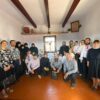 Memorial house of romanian elder Sofian Boghiu Consecrated in his native Village
Memorial house of romanian elder Sofian Boghiu Consecrated in his native Village 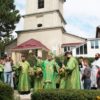 On the 14th Sunday after Pentecost, His Eminence Metropolitan Vladimir celebrated the Divine Liturgy in the St. Nicolas Monastery, Dobrusa village, Soldanesti region
On the 14th Sunday after Pentecost, His Eminence Metropolitan Vladimir celebrated the Divine Liturgy in the St. Nicolas Monastery, Dobrusa village, Soldanesti region  Inauguration of the volume of articles presented at the National Scientific Conference “The Orthodox Church and the State: Faith and Knowledge”
Inauguration of the volume of articles presented at the National Scientific Conference “The Orthodox Church and the State: Faith and Knowledge”  The 12th Sunday after Pentecost – kindness in God changes the world we live in
The 12th Sunday after Pentecost – kindness in God changes the world we live in  The 11th Sunday after Pentecost – loving our God and our neighbor
The 11th Sunday after Pentecost – loving our God and our neighbor 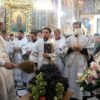 The Transfiguration of the Lord, celebrated in the Nativity of the Lord Cathedral in Chisinau
The Transfiguration of the Lord, celebrated in the Nativity of the Lord Cathedral in Chisinau 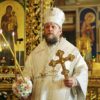 His Eminence Metropolitan Vladimir celebrates 65th anniversary
His Eminence Metropolitan Vladimir celebrates 65th anniversary  Divine Service at the St. Theodore of Tyre Monastery (Ciuflea) in Chisinau, and congratulation of Archimandrite Nicolae (Rosca), the Monastery’s confessor-administrator, on the 50th anniversary.
Divine Service at the St. Theodore of Tyre Monastery (Ciuflea) in Chisinau, and congratulation of Archimandrite Nicolae (Rosca), the Monastery’s confessor-administrator, on the 50th anniversary.  The Tenth Sunday after Pentecost: Divine Liturgy in the Nativity of the Lord Cathedral in Chisinau
The Tenth Sunday after Pentecost: Divine Liturgy in the Nativity of the Lord Cathedral in Chisinau 
